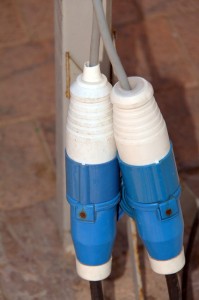 Waterproof cable glands are best used in environments wherein there is a possibility that water and debris can pass through a cable’s openings. These cable fittings form a tight seal that act as a barrier against water and debris and prevent unnecessary damage to the electronic devices where the cables are attached.
Waterproof cable glands are best used in environments wherein there is a possibility that water and debris can pass through a cable’s openings. These cable fittings form a tight seal that act as a barrier against water and debris and prevent unnecessary damage to the electronic devices where the cables are attached.
Used with light fittings, these cable glands perform two key functions:they attach the cable to the light fitting, and seal off the cable opening from water and particles. When the light fitting is to be used in the outdoors, the use of a waterproof cable fitting is deemed essential. Using the wrong cable gland can undermine the fitting’s ingress protection of IP rating and can lead to the entry of water and particles into the fitting.
The IP rating refers to the amount of resistance a light fitting has against water and other particles. The higher the rating is, the higher the light fitting’s resistance against both water and dust.
When installing light fittings outdoors, it is imperative that the cable glands are tightened. Once installed, the cable glands need to be checked on a regular basis. If these show signs of deterioration, these should be replaced immediately.
If you are using single core or multiple cables, avoid the use of a single cable gland. This can only lead to the entry of water. If you must use more than one cable in the installation of light fittings for outdoor use, choose a junction box instead. This will eliminate the possibility of water and dust seeping through the cable’s openings.
But apart from the use of the appropriate type of waterproof cable fittings, property owners should also carefully select the appropriate electrical cables. Refer to the recommendations of the manufacturer of your light fitting. Often, manufacturers recommend 3-core electric cables that are rubber sheathed. However, for outdoor use, a PVC-sheathed cable is preferable due to its high level of sealing capacity.
Whenever possible, enlist the aid of a qualified electrician to install your outdoor light fittings for you. This will not only help you avoid the hard work of installing fittings on your property or eliminate the guesswork involved, but more than that, hiring a professional can also ensure the safety of your household and your property. After installation, call in the electrician at least once a year to check your outdoor light fittings as well as the cable glands used. Should these show signs of deterioration, have these immediately replaced.
